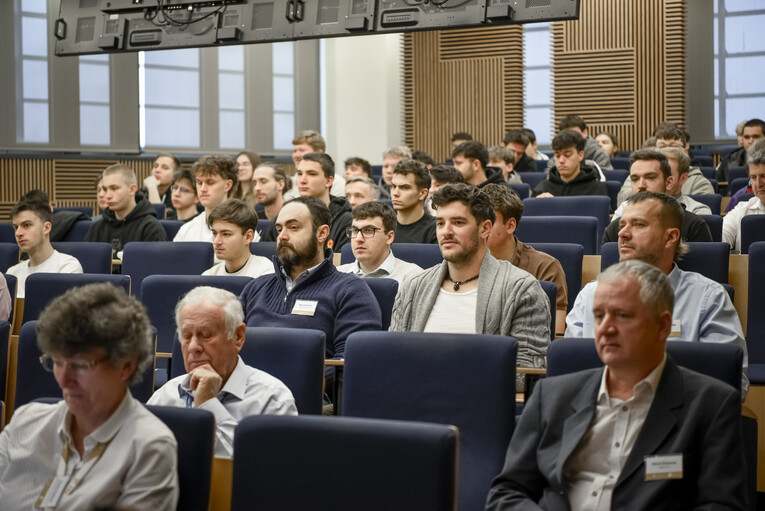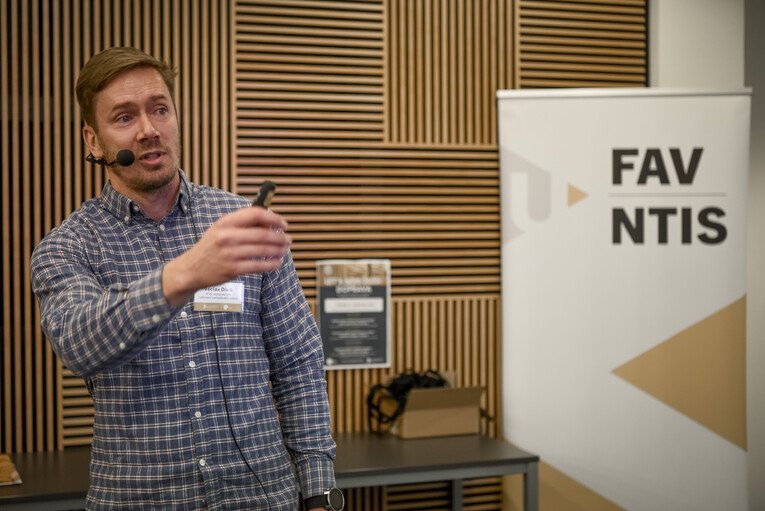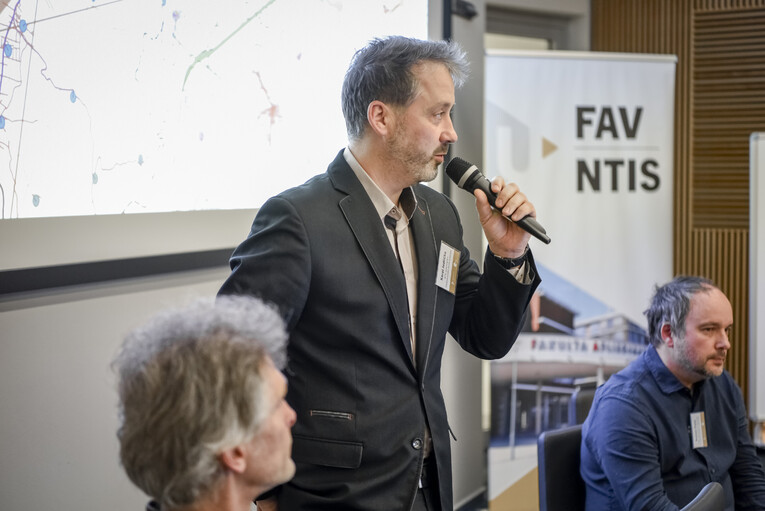The NTIS Research Center presented innovations and trends in transportation
FAV
Conference
Public

Autonomous vehicles, transportation systems and research in the field of rail vehicle comfort were the topics of the second annual Let's NTIS event at the University of West Bohemia.
How can trams and trains be improved to make them lighter and more durable? And what about autonomous vehicles? Can we really rely on them? These and other questions were addressed at this year's
edition of the
Let's NTIS project, which focused on transportation. Nearly one hundred attendees learned about various combinations of modern technology with practical applications that respond to current mobility challenges. The event is organized annually by the
Faculty of Applied Sciences at the University of West Bohemia, which also includes the NTIS research center.
The comfort of rail vehicles was the topic chosen by lecturers
Miroslav Byrtus and
Jan Krystek from the Department of Mechanics. They presented an innovative design for a lightweight composite chassis using carbon and glass fibres.
"Composite materials allow us to significantly reduce the weight of the chassis while maintaining or even increasing its strength and durability. Among other things, they also allow us to more effectively define different stiffness levels of the chassis for individual loading modes. This is crucial for rail vehicles," explained Krystek.
Petr Špalek, a locomotive engineer from Škoda Transportation, then gave the audience insight into how research can be successfully connected with practical application.
The principle of operation and issues surrounding autonomous vehicles were explained by computer vision expert
Václav Diviš. He focused specifically on
the influence of modern perception algorithms on the decision-making of autonomous systems.
"It is not enough for a vehicle to function. We must be able to objectively evaluate how reliably it reacts in unexpected situations. The credibility of autonomous systems is absolutely essential for their real-world deployment," emphasized Diviš. This was also confirmed by
Josef Volek from Škoda Digital.
Jindřich Duník from the NTIS center
discussed reliable navigation and the detection of false GNSS signals.
This year's Let's NTIS also covered the topic of transport systems and their impact on the environment. "Transport modeling is not just about how many cars pass through a street - it's about understanding how they interact and what consequences this has for mobility in the city. Thanks to modern tools, we can simulate complex transport scenarios. Furthermore, today we can evaluate the impact of traffic simulations on air quality and quality of life in cities," said Karel Jedlička, an expert in multidimensional data modeling. He was joined in the discussion by his colleagues Roman Čada, Michal Kepka, and Radek Fiala. The practical use of the research was demonstrated by Daniel Beran from RoadTwin, a spin-off company of the University of West Bohemia that develops solutions for urban transport modeling. Beran presented a web application capable of simulating traffic scenarios in near real time.
The Let's NTIS project introduces technical students and UWB employees to research at the University of West Bohemia departments. At this year's event, held on November 13, representatives of regional institutions, experts from companies, and high school students also attended. Organizers noted that attendees particularly appreciated the combination of theory and practical demonstrations.
“NTIS covers a wide range of areas, so we would like to devote each year to a different topic. Last year, it was biomedical engineering. We don’t know the topic for next year yet, but we are already carefully selecting it. We want to show people how broad the research at our center is and how closely we collaborate with industry,” concluded
Pavel Novák, director of the NTIS research center.
Gallery





Faculty of Applied Sciences
|
Martina Batková
|
14. 11. 2025
|